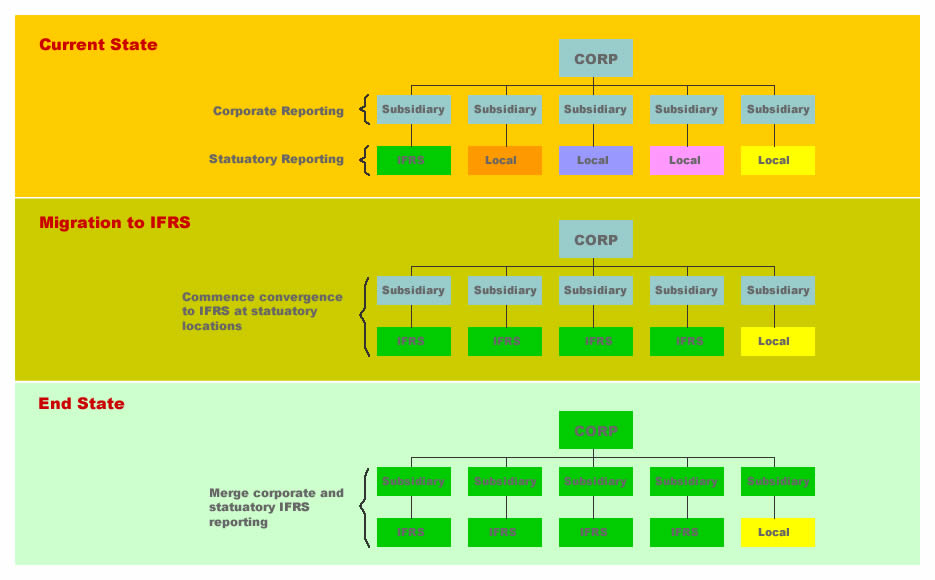IFRS Compliance
One of the critical technology issues facing today’s companies is how to best support their financial consolidation and reporting needs in order to achieve IFRS compliance. This is the unavoidable technology change around the transition to IFRS. The good news is that, with sufficient planning, companies can embed many IFRS requirements into their general ledger and subsystems, thereby removing the need for manual adjustments in their consolidation and reporting system and minimizing compliance risk. This reduces the scope of required updates to the consolidation and reporting system—where the focus should be on adoption of IFRS specific consolidation rules and report layout. Technology is a key enabler in the transition to IFRS, and the financial consolidation and reporting process in particular. Companies can look at the technology impacts of an IFRS transition in three layers: 1) Financial Consolidation and Reporting, 2) General Ledger, and 3) Subledgers or Subsystems
Since most organizations will undergo a phased embedding process to convert from US Generally Accepted Accounting Principles (GAAP) to IFRS, the planning for IFRS systems readiness has become a burning issue. Many organizations already have a technology road map and may soon be performing upgrades or conversions—undertakings that they should coordinate with their planning for IFRS. Coordinating the transition to IFRS with the technology road map can be challenging, and management is apt to underestimate the amount of time and resources that a successful conversion project requires. Historically, underestimating the challenge has led some of them to rush this complex process—giving rise to increased risk of errors and/or the need to outsource more work than necessary. This has driven up costs, weakened their control environment and hindered their efforts to embed IFRS knowledge within the company. That said, conversion brings a one-time opportunity to comprehensively reassess financial reporting, taking a clean-sheet-of-paper approach to financial policies and processes and the technology that supports them.
Given the length of time it takes to change an organization’s people, process and technologies, and to adopt governance practices globally, now is the time to assess and plan for the impacts of an IFRS transition on your organization. Those companies that act now to get the jump on IFRS requirements - putting in place an effective methodology supported by people, processes and tools to help them understand the transition impact on their organization - will be among the first to benefit from the adoption of IFRS. Early action will allow companies to control costs, understand and manage the challenging scope of implementation, and allow for a smooth transition plan.
The time frame—shorter than it appears. The multiple countries at different stages in the adoption process, organizations should assess how best to time the internal adoption of IFRS accounting standards, and the governance of those standards, as well as the ability to present IFRS statements to the US markets. Given the length of time taken to change an organization’s people, processes and technology, along with the global adoption governance issues, now is the time to assess the impacts of an IFRS transition, and plan to embed IFRS accordingly into the day-to-day operations.
And there are many things to consider. Don’t underestimate how long all of this takes. If you want to get it right, this is the time to determine specifically how IFRS will impact your company, and to start planning and executing your strategy accordingly. Indeed, one of the most critical—and unavoidable—technology challenges facing today’s executive’s centers on how best to support the IFRS financial consolidation and reporting requirements.
The clock is ticking… Contact us for SAP Solutions of IFRS at corporateperformance@csm-consultant.com and we will help you with your initiatives.


